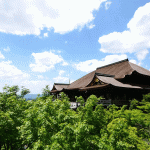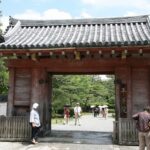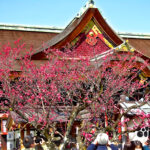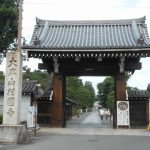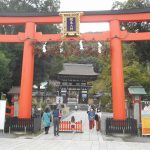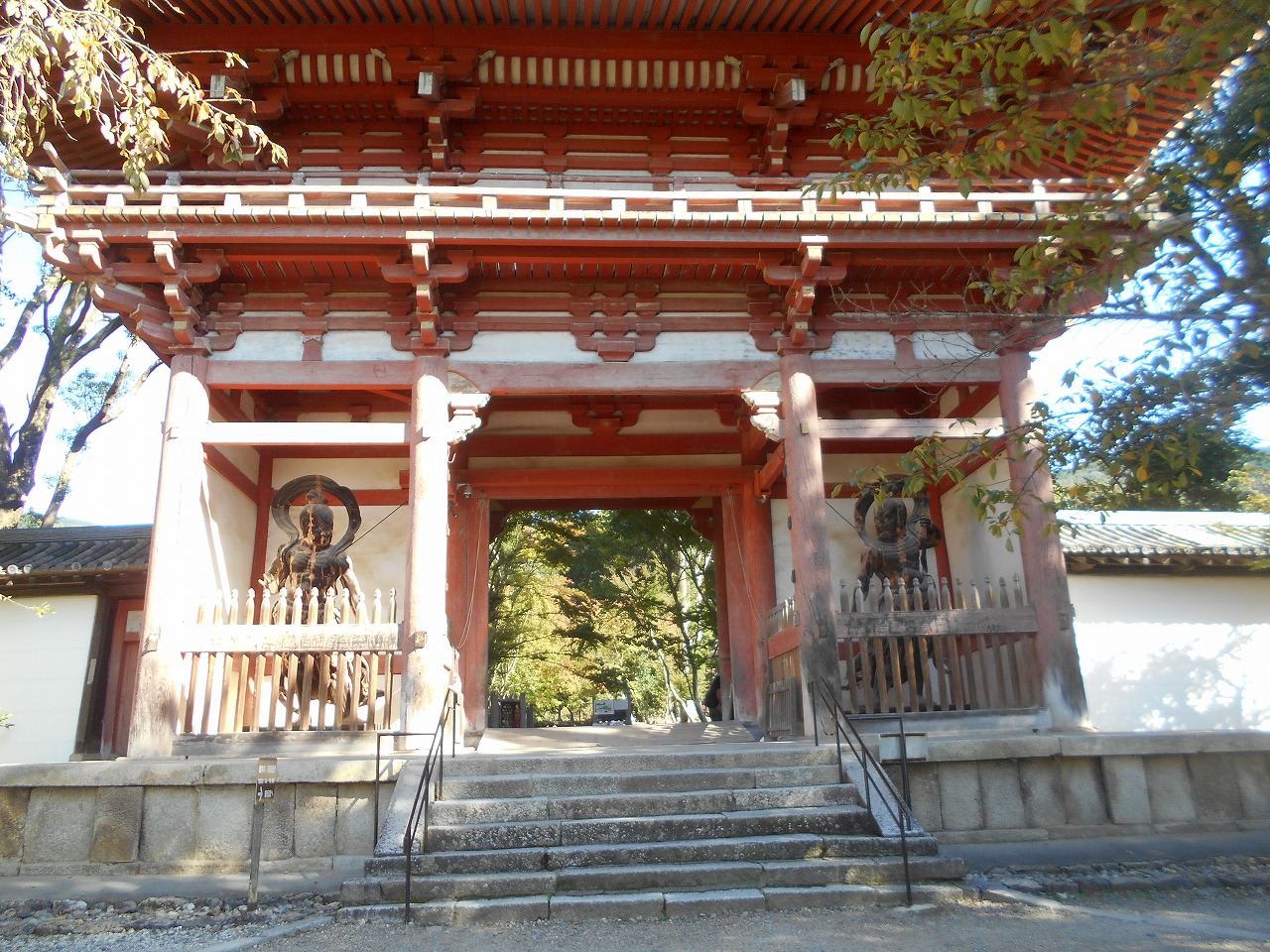
ページの目次
Daigo-ji Temple(醍醐寺)
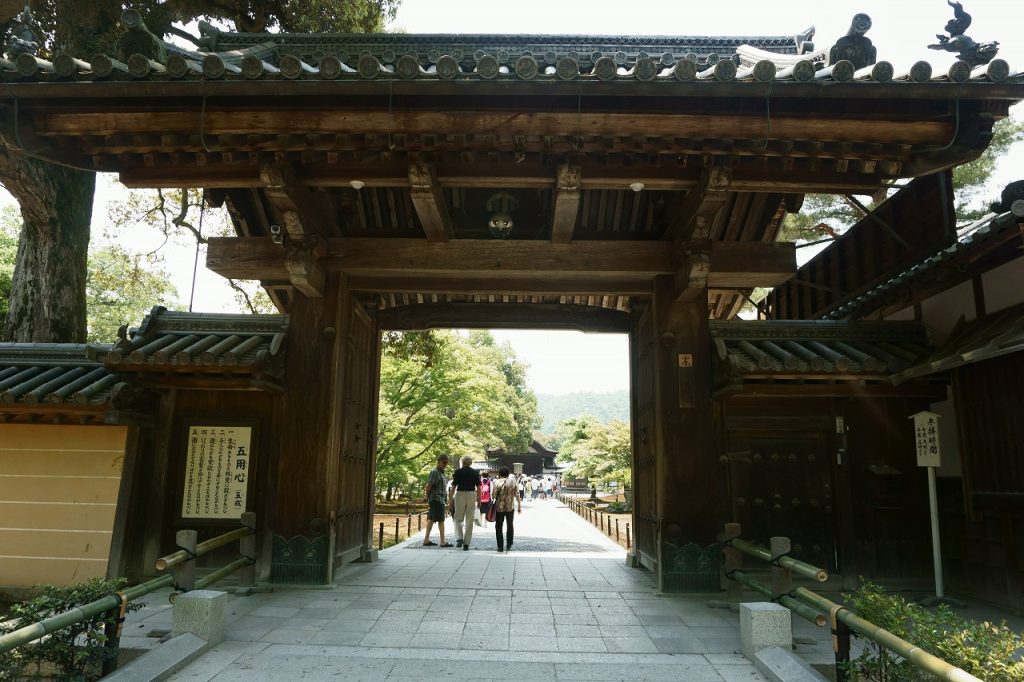
1. Location-Access
This temple is located at the foot and top of Mt. Daigo, Rakuto area to the east of Kyoto.
It takes 40 minutes from Kyoto station to Daigo by subway, and ten minutes walking.
(この寺は、京都北東部の洛東エリアで、醍醐山の山麓と平地に位置している。
地下鉄で京都駅から醍醐駅、徒歩10分計40分。
JR西日本で京都駅から六地蔵、六地蔵から醍醐寺、徒歩10分計40分
又は、京都駅から山科駅、山科から醍醐駅、徒歩10分、計40分。)
2. Who was built this temple?
1) Daigo-ji temple has two groups, on the mountain and the flat land
The construction of the former began in 874, and the letter in 904.
(醍醐寺は山麓と平地の2グループに分けられる。前者の山頂伽藍は874年、後者の平地
伽藍は904年に完備が始められた。)
On the Mountain 上醍醐
2) In 874, Seiho who was a great religion leader and the disciple of Kukai, was enshrined two dieties with name of Juntei Kannon and Nyoirin Kannon respectively.
(874年、偉大な宗教家で空海の弟子であった聖宝が、醍醐山の小堂宇で建立した准胝観音と如意輪観音の2つの神をそれぞれ安置した。)
3) After that, this was developed in the village deep in the mountains as the hallow ground of holy man, supported by three Emperors of Daigo, Suzaku and Murakami.
(その後、醍醐、朱雀、村上の三天皇の信仰を受け、修験者達の霊場として、山深い醍醐
山頂一帯を中心に発展していった。大聖堂の天井を完成後、醍醐寺の基礎を創った。)
4) At the top of Daigo mountain, Yakushi-do and Godai-do were constructed in 904.
After it became enshrined temple of Emperor Godaigo.
(904年には、醍醐天皇の勅願寺となり、薬師堂を建立、五大堂も完成するに至って、
「上醍醐」の伽藍が完成した。)
On the Flat land 下醍醐
5) The great cathedral ceiling of the lower Daigo was created after five-storied pagota established in 951.
(951年、五重塔が完成後、「下醍醐」の大伽藍が発展した。)
6) After that, the Buddha hall was destroyed due to the five-storied arising from the series
war such as Onin-no-ran War.
The Pagota only remain as it was at the establishing time now.
(その後、応仁の乱など相次ぐ戦火で下醍醐の堂宇は荒廃し、五重塔のみがその姿を残している。)
7) By the taking the opportunity to go the cherry blossom-viewing picnics, Hideyoshi transferred the current golden hall from Mangan-ji Temple at the KishuYuasa and the current Daigo-ji Temple was formed after the cathedral ceiling was reconstructed in 1598.
(豊臣秀吉による「醍醐の花見」を契機に、1598年現在の金堂を秀吉が紀州、湯浅の満願寺から移築する際、豊臣家、徳川家からの援助により、寺門の整備がされ、今日の醍醐寺の姿が整った。)
3. What is this temple famous for ?
1) Sakura in Spring (national treasure) 春の桜
There are 1000 cheery trees and many types so you can enjoy blossoms procession is held in every April. Toyo-taiko cherry blossom procession is held in every April.
We can enjoy all four seasons, not just Spring, Summer forest with greenery Autumn leaves and Snow scene in winter.
(1000の桜があり、種類も豊富なので3週間桜を楽しめる。毎年4月に豊太閤花見行列が開催される。春だけでなく、夏は緑広がる醍醐の森、秋は紅葉だけでなく、冬は雪景色。)
2) Sanbou-en 三宝園
Sanboin Garden was basically designed by Hidetoshi himself when the cherry blossom- viewing panty at Daigo was held. The Omote-shoin (main drawing rooms) of Sambo-in(residence) was enlarged and rebuilt during the reign of Totomi Hideyoshi.
Its garden, on Hideyoshi’s order,was built in the blend style of the Chisen-kaitu-shikiteien (garden with a path around a central pond) and the Kare-sansui(garden representing hils and streams without water.
(三宝院の庭園は醍醐の花見に際し、秀吉が自ら基本設計を行ったものである。
三宝院の表書院は秀吉による1598年花見の際に増築されたものである。また、この横に広がる庭園も秀吉が、直接指示して造らせた豪華なもので、池泉回遊式と枯山水が折衷されている。)
4. What is highlight ?
下醍醐
1) 西大門 Saidaimon (Niou-zo:Important cultural property)
Saidaimon was built rebuilt by Hideyori Toyotomi from South gate to West gate.
(秀頼により1605年再建されたもので南大門→西大門へ移設された。)
2) 金堂 Kondo(main hall, National treasure)
The Kondo(main hall, national treasure) was transferred from Mangan-ji temple in the Kishu region in 1600. It evokes an atomophere of the end of Heian period.
(金堂は紀州満願寺の金堂を移築したもので、平安時代末期の仏道様式を残している。)
3) 五重塔 Five storied pagota(National treasure)
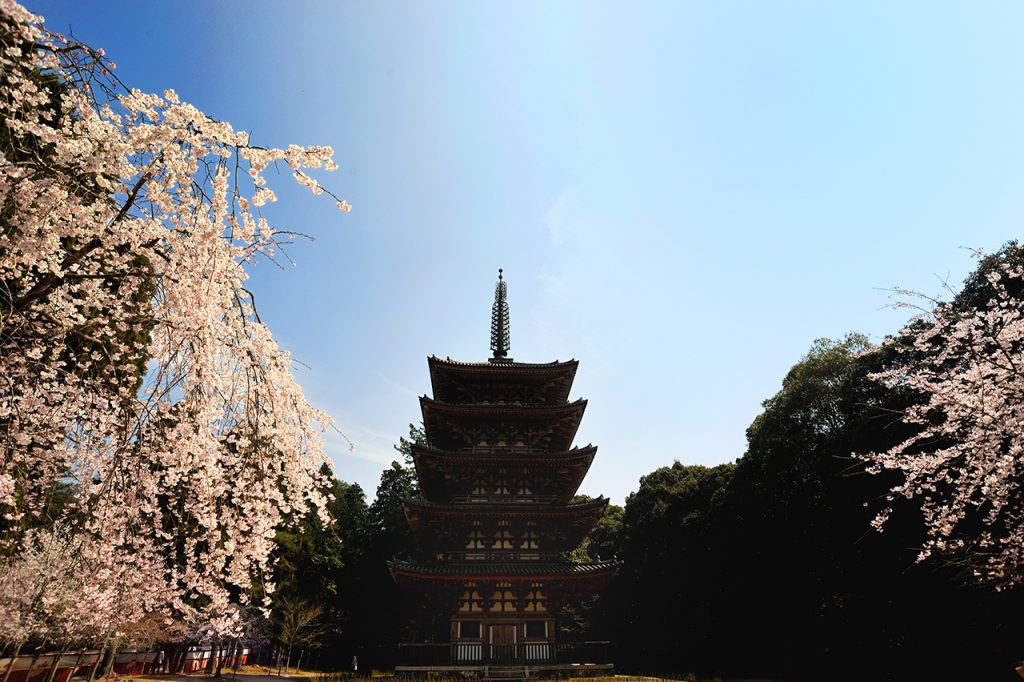
Five storied pagota (national treasure) was built in 951, is in the oldest of buildings in Kyoto, whose construction years are known. It has a characteristic features of easoteric Buddhism where a mandara chart in painted on the wall of the first strory.
(951年に建立された五重塔は、年代が明らかな建物として京都で現存最古のものである。
その外観は安定感があり、初層内部にマンダラを描く密教寺院の特色が見られる。
幾何学的なデザインで、白い砂が広がって海の波のように庭を掃いている。)
4) 観音堂 Kannon-do
(1930年醍醐天皇の千年記念碑として、山口玄洞の寄進)
5) 三宝院. Sanpo-in
(1115年勝寛が創建して、。表書院と唐門が国宝、殿堂6棟、宝印塔、障壁画が重要文化財。
応仁の乱で焼失したが、秀吉の信仰により三宝院を中心に「醍醐の花見」が開かれた。
上醍醐
1) 醍醐水 Daigo-sui
(聖宝大師の霊水で醍醐寺発祥の地の由来)
2) 清龍宮拝殿 Kiyotake hall of worship (National treasure)
Kiyotake hall of worship(national treasure), the tulelary shrined was restored in 1434.
It is a residential building finished in the style called the Kake-zukiri was restored in 1124.
(薬師堂は1124年に再建されて、平安時代の初期に礼堂を持たない伝堂の模様を伝えている。また、鎮守社清龍拝殿は1343年に再建された懸造りと呼ばれる住宅風に仕上げある。)
3) 薬師堂 Yakushi-do
Yakushi-Buddha hall was restored in 1124. And it was built in no oratory style used at the beginning of Heian period.
(913年、醍醐天皇の御願寺として創建され、1124年再建された。)
4) 如意論堂 Nyoirin-do (Important cultural property)
876年創建、1613年再建
5) 開山堂 Kaizan-do
(聖宝大師を祀り重要文化財で、1606年、秀頼が再建した。
6)世界遺産 Was made a World Heritage Site in 1994.
(1994年に世界遺産に登録された。)
